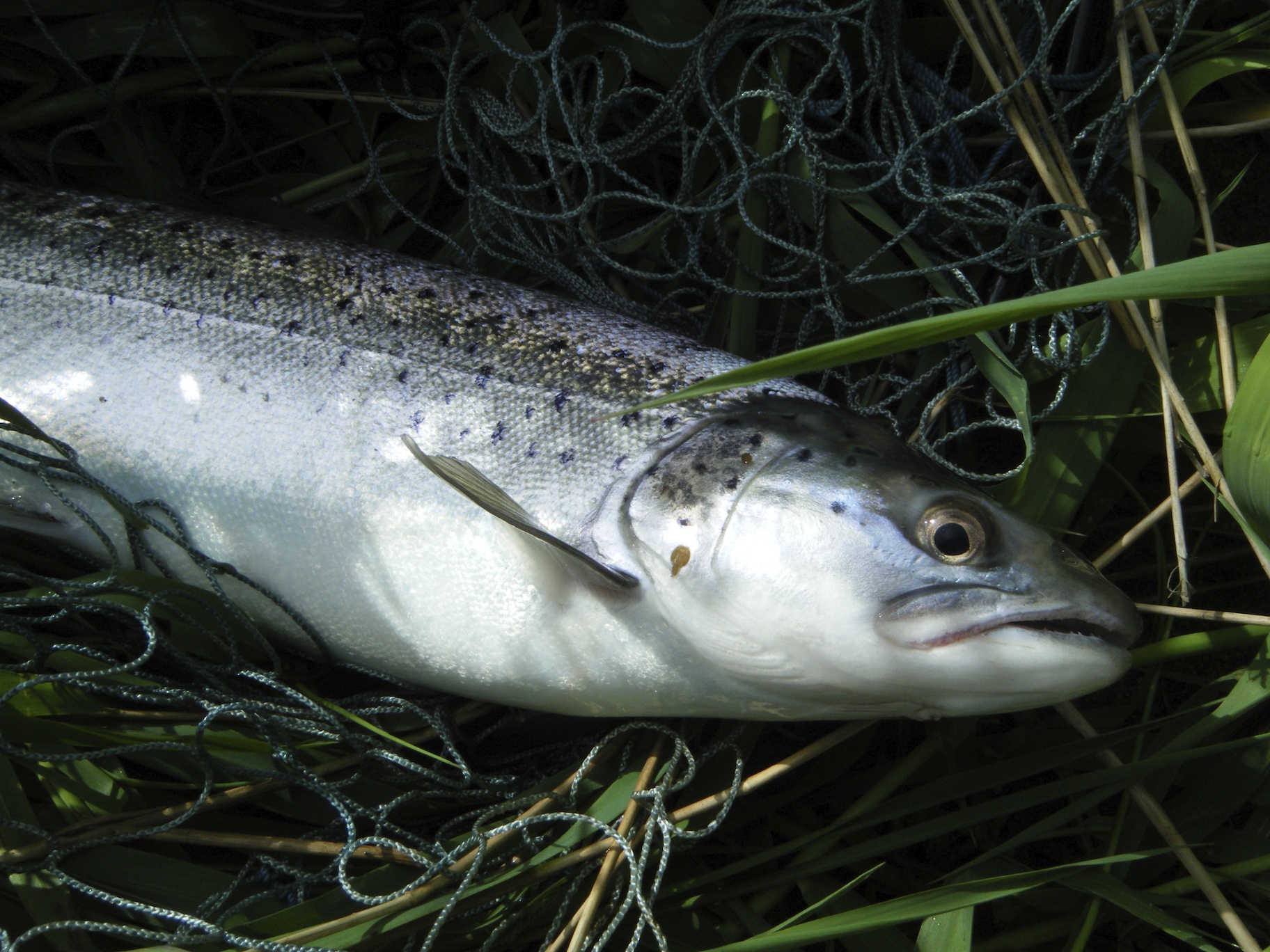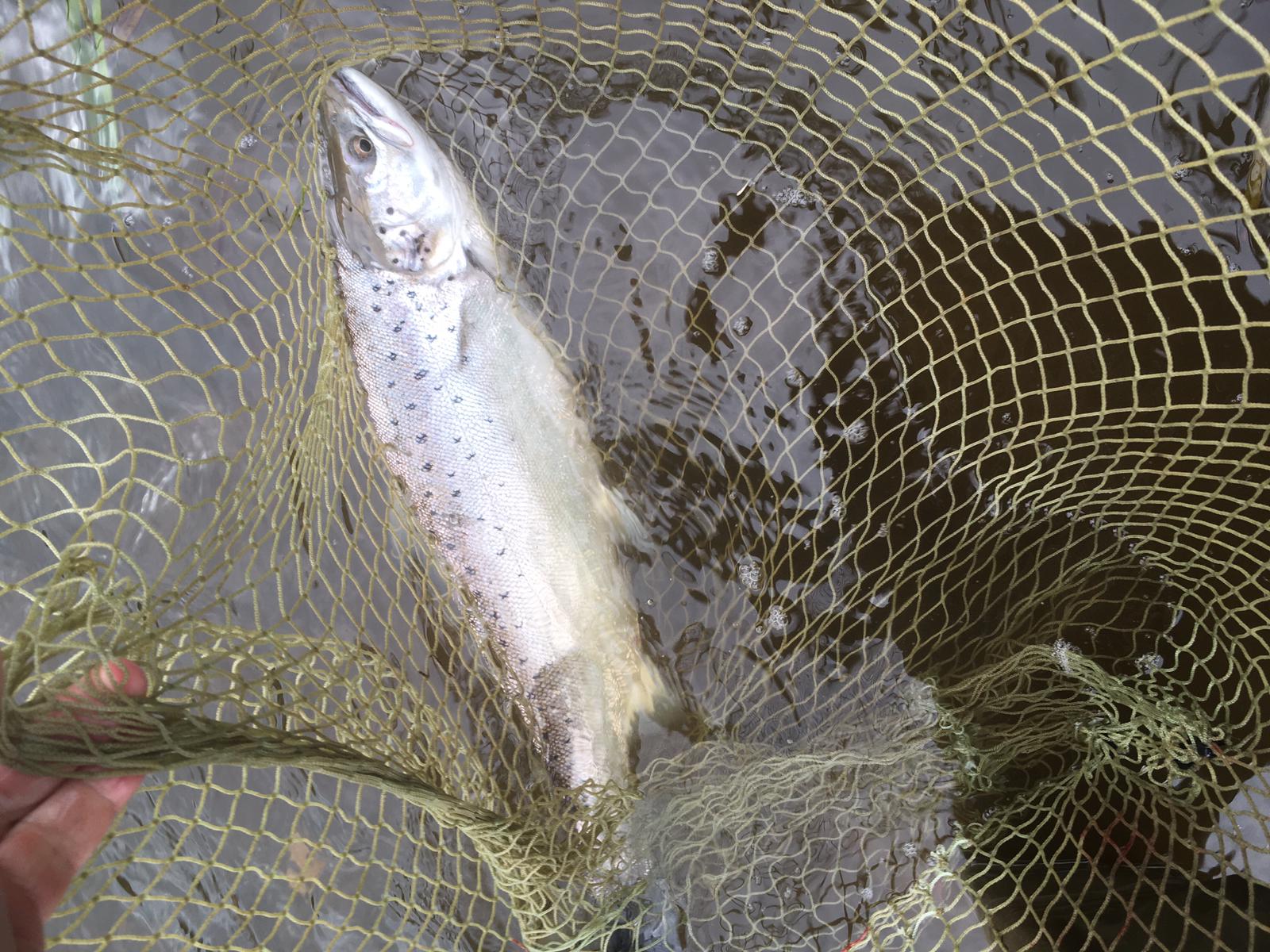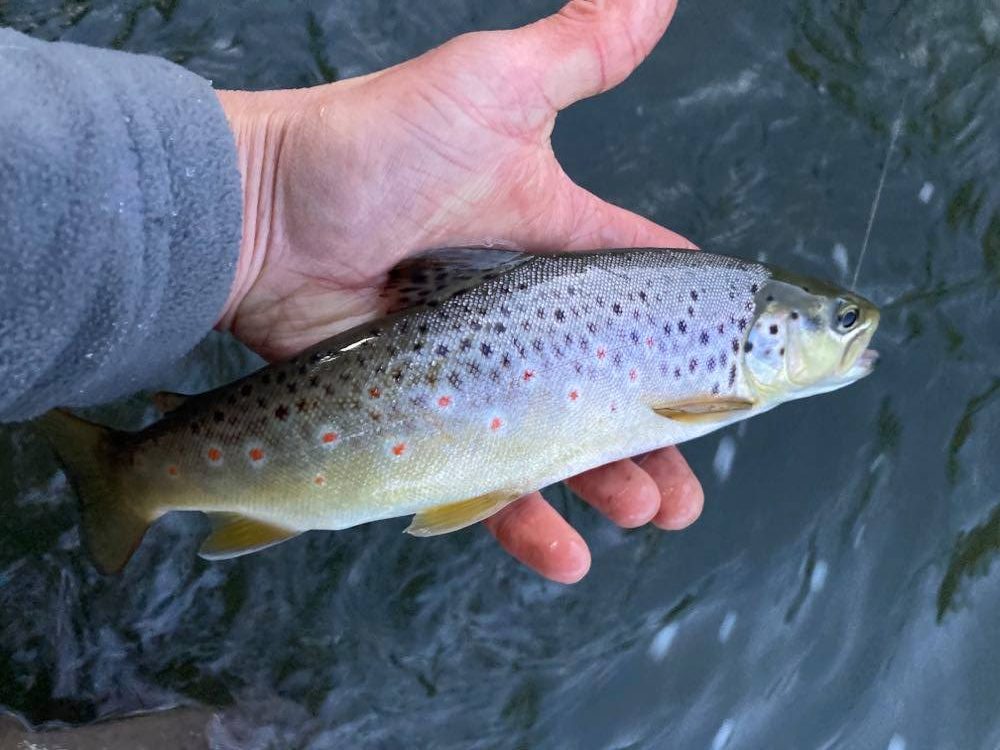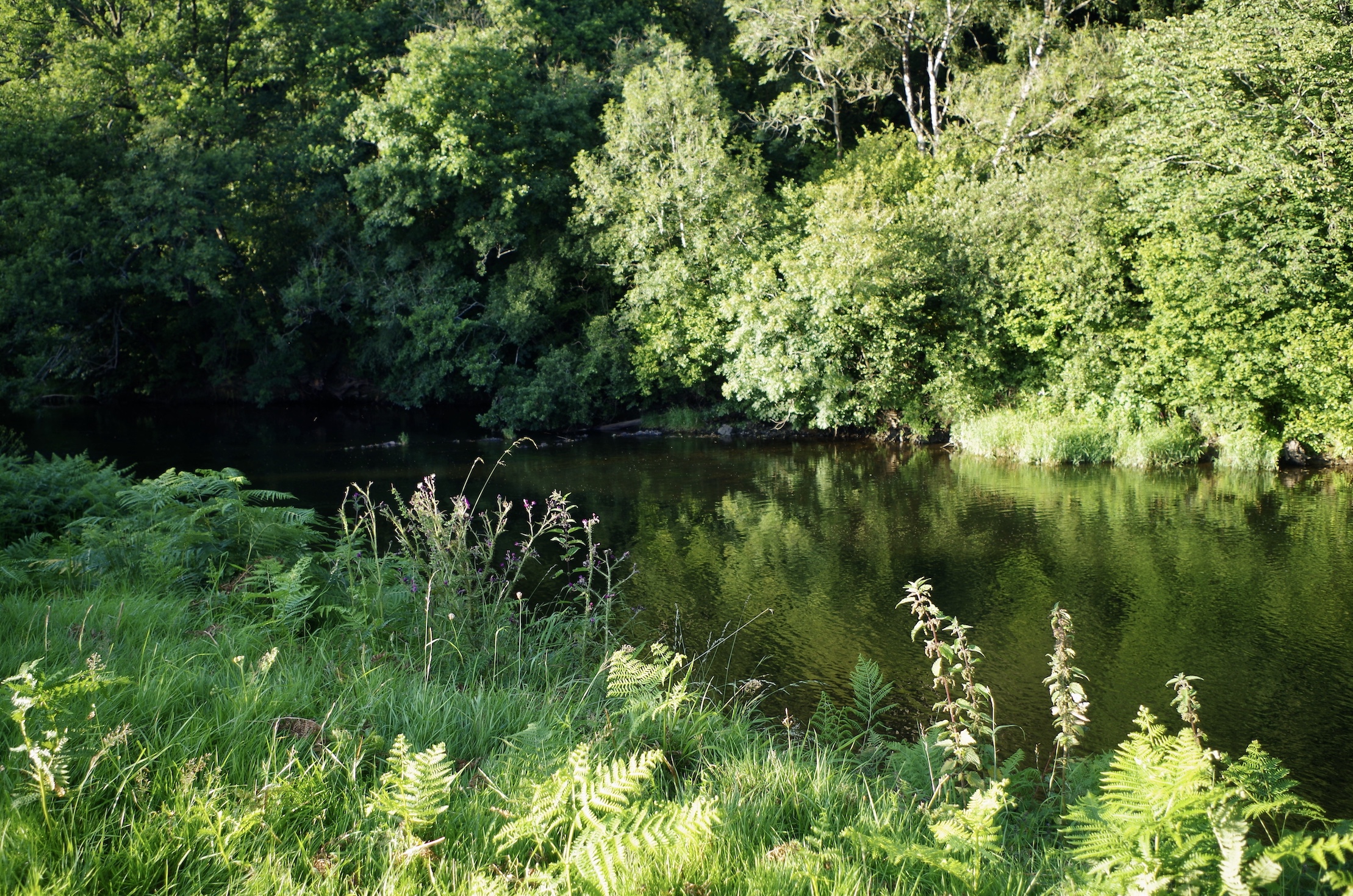Recent rain has brought life into North Devons rivers with salmon and sea trout forging up river. Paul Carter tempted a fine 6lb salmon from a lower Taw beat along with a bright silver peal of around 1lb 8oz. With more rain forecast prospects for Taw, Torridge and Lyn are good.
An indicator of fresh run fish is often the presence of sea lice these can remain on the fish for up to 48hours. The tails of the lice contain the eggs which drop off before the lice. Small numbers of lice have always been an indication of a fish fresh from the sea. Sadly in some areas on the West coast of Scotland sea lice infestations from intense salmon farming have decimated salmon and sea trout populations.

Wild brown trout fishing is also good with some good mayfly hatches reported on the Middle Torridge.

Richard Nickell co owner of Blakewell Fishery tells me that some good brown trout are taking flies intended for sea trout with several fish well over the pound mark. Blakewell is in good form as well with buzzers working well.

Guidelines
Good Practice Guide
Catching the fish
Use appropriate tackle. Rod and line should be strong enough to bring the fish to net swiftly and without playing it to exhaustion. Move the fish out of fast water as soon as possible. The use of barbless single or double hooks is recommended. Barbed hooks can be rendered barbless by pinching with pliers.
Catch and Release
RTFCA strongly recommends that you practise catch and release whenever possible.
Playing the fish
When playing a fish try not to play it to exhaustion but land it as quickly as is possible.
Landing the fish
Use a fine knotless meshed landing net. No gaffs or tailers may be used. Ensure the fish remains in the water at all times.
Do not beach or tail a fish.
Handling the fish
Ensure that hands are wet and avoid squeezing the fish.
Removing the hook
Remove the hook gently, using forceps or a hook disgorger.
Should the fish be deep-hooked cut the line as near to the hook as possible.
Recording the fish
Do not weigh the fish, but calculate its length and subsequently use a length/weight conversion chart (see below) to find the weight. Suitable length marks on rod or wading-stick can be helpful. Photographs of the fish should only be taken while the fish is in the water.
Reviving and releasing the fish
Support the fish with both hands in a gentle current and facing upstream.
Allow time for the fish to regain its strength and be able to swim away on its own.
Disease
To guard against disease that can damage our fish stocks fishermen are directed to the Environment Agency’s website for “Guidance on Disinfecting Fishing Tackle”.
The Environment Agency Incident Hotline
For reporting any serious environmental incident such as pollution, poaching or fish in distress is
0800 807 060
- RTFA strongly believes that fishermen are the best guardians of our river and if you fish the Taw why not join the Association to support our efforts.
- Contact us via our website at www.rivertawfisheries.co.uk or phone our Treasurer, Richard Nickell on 10271 344533 / 07884 073932



